|
Costa
Azul |
| Portugal > Tourism > Lisbon > Costa Azul > Handicrafts |
|
Handicrafts are the end product of a living culture. Through techniques passed down through the generations, this vivid sector is as varied as the sensitivity and imagination of each artist. The region of the 'Costa Azul' can be classified in three major scenarios: rural, river-related and maritime, to which urban growth and industry have been added this century. In the context of landscape and resources, materials are transformed
and techniques developed to produce items of rare beauty and practicality
which make up the artistic heritage of the 'Costa Azul'. |
| The Rural World |
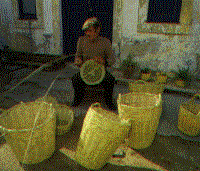 |
In this district, the rural scene is represented by the Alentejo region and interior of the Setúbal peninsula. In these places, the handcrafted article is still a highly usable item with its own beauty and obvious practicality. We would like to highlight objects crafted from clay, iron, wicker and cane, wood, leather, cotton and wool. |
| The River/Sea World |
|
These areas are found on the banks of the Tejo and Sado Rivers and along the coast of the 'Costa Azul'. Major centres are situated in Sesimbra, Setúbal and Sines (coastal) and Alcochete, Monhjo, Moita and Seixal (river). The typical handicrafts from these areas have characteristic links with the sea (miniatures of boats), the use of techniques linked to the ocean (rope making and fishing accessories) and liberal use of materials from the sea such as dried fish scales, sea shells and starfish in the making of ornaments. |
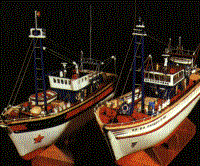 |
| The Urban / Industrial World |
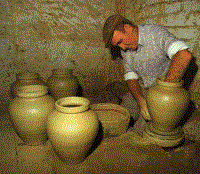 |
This area is both socially and economically dominant. By assimilating and adapting established techniques the craftsman now uses mixed techniques to create masterpieces with materials of a less traditional nature. These objects of multiple influence are found all over the district, particularly in the commercial urban centres of Almada and Setúbal and the more industrial Barreiro and Sines. The urban/industrial craftsman uses a variety of techniques and tools available in the urban/industrial world. The individualistic artistic charm of the products separate them from industrial mass-produced varieties. |
| Borderline / Transition Areas |
|
The introduction of industry and urban growth together with mass migration, technology, variety of activities and improved communication are responsible for the breaking down of the former borders which had traditionally existed. In the 'Costa Azul' region we can name two areas which fall into this category: 1- the area between Almada/Montijo. |
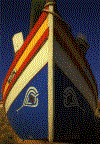 |
| Portugal > Tourism > Lisbon > Costa Azul > Handicrafts |
|
Handicrafts |
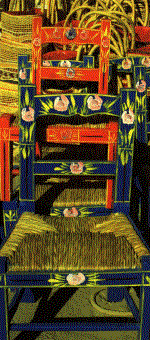 The
originality of handicrafts from a particular region is revealed by
three basic features
The
originality of handicrafts from a particular region is revealed by
three basic features